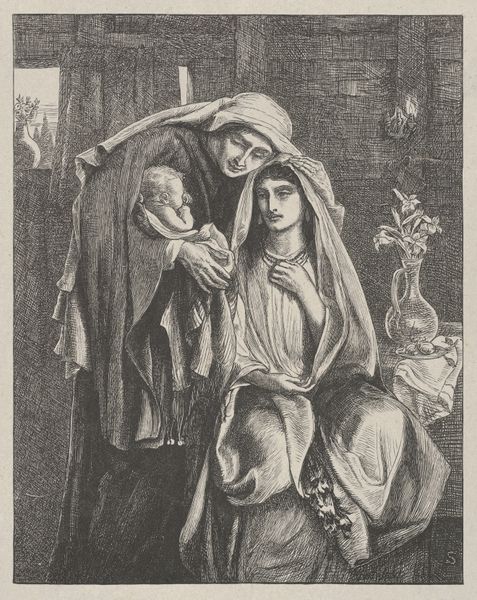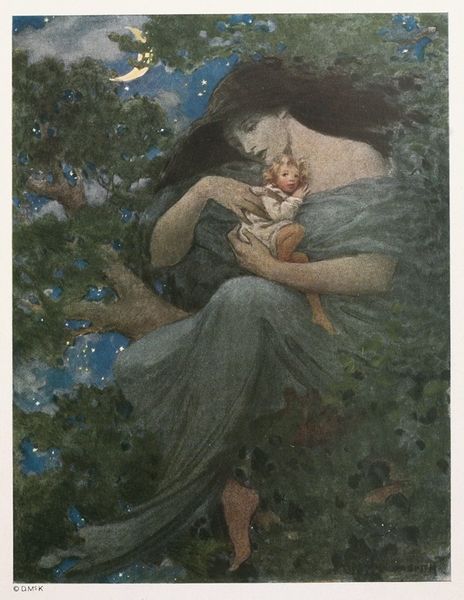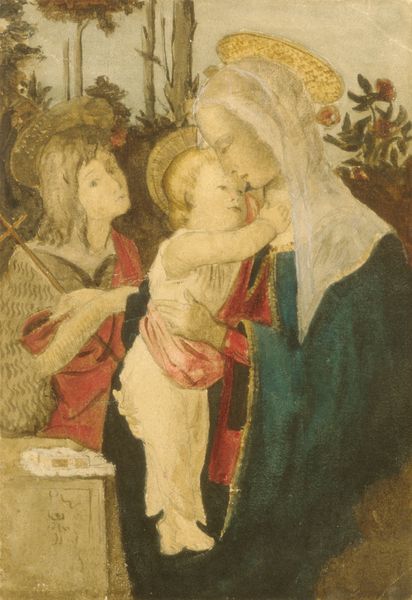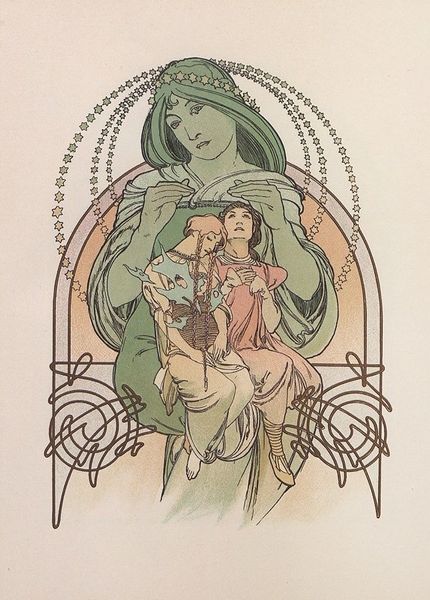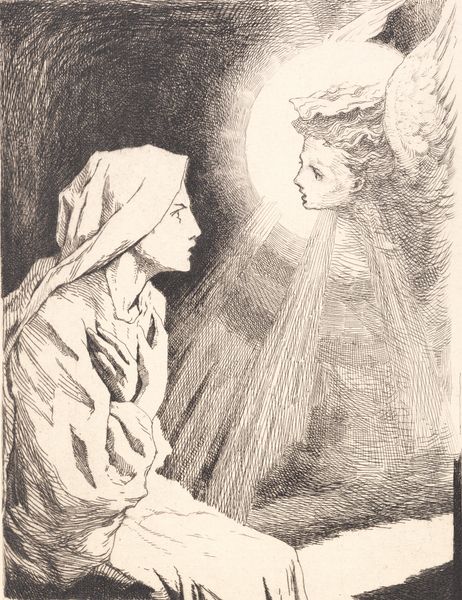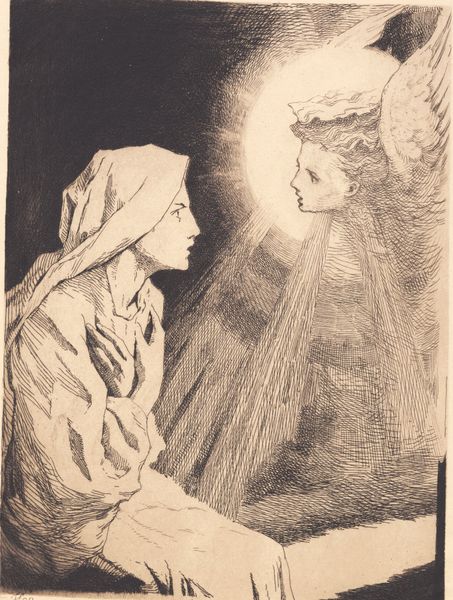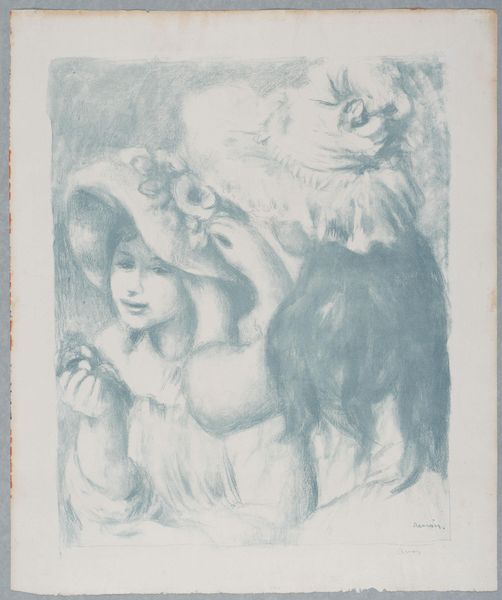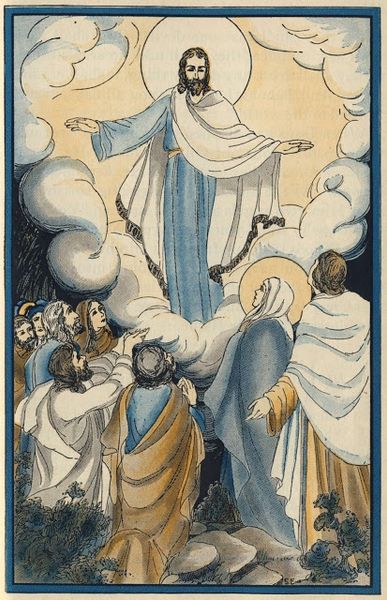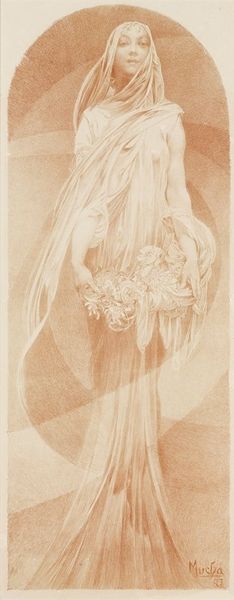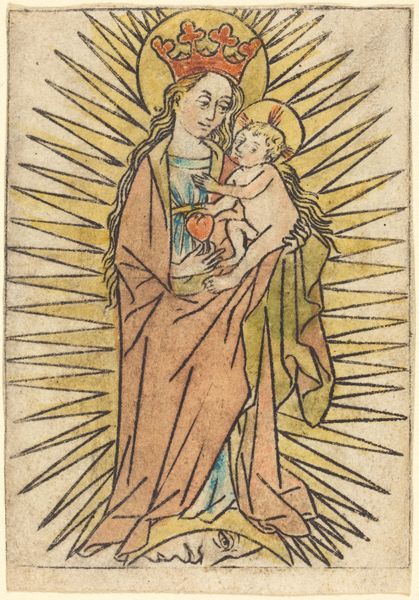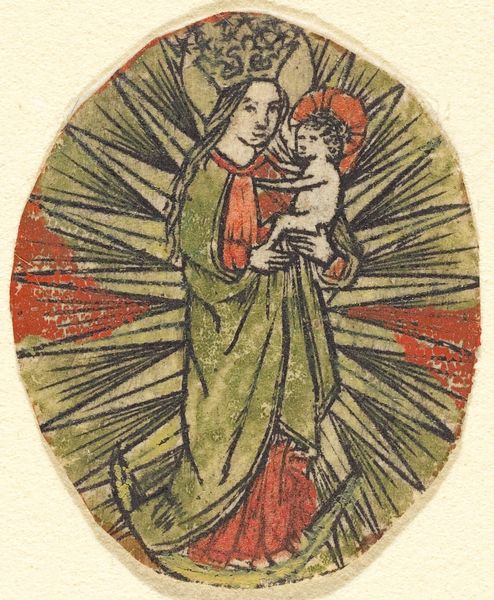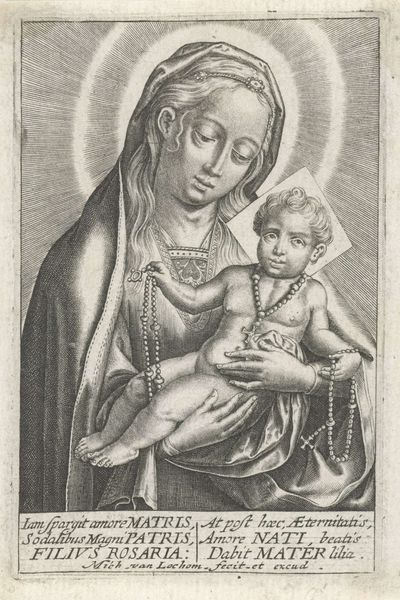
watercolor
#
portrait
#
fairy-painting
#
arts-&-crafts-movement
#
oil painting
#
watercolor
#
watercolour illustration
#
watercolor
Copyright: Public Domain: Artvee
Editor: This watercolor illustration, entitled ‘Come,’ and she stili held out her arms, created by Jessie Willcox Smith in 1920, features two blond female figures against a dreamy, star-speckled background. There’s something really compelling about the tactile quality of the watercolor, almost like looking at woven cloth, but I can't quite put my finger on why. What draws your eye? Curator: Consider how the materiality of watercolour – its inherent dependence on the maker’s skill in controlling the water and pigment – connects it to labour typically deemed “feminine” during the Arts and Crafts movement. Look closely. The wash of color used for the queen’s gown and the child’s dress appears almost mass-produced, yet retains subtle imperfections that speak of a manual, even domestic process. How might Smith be blurring the boundaries between high art and accessible illustration meant for mass consumption? Editor: That's fascinating. I hadn't thought about the mass consumption aspect. It almost feels contradictory because of the fairytale setting. It’s quite different to oil on canvas... Curator: Precisely. Oil paints historically denoted wealth and power. Watercolor was more readily available. How does this change the cultural associations of the art and its purpose? Consider who consumed this image, where it was published, and the implications of circulating idealized imagery of childhood and motherhood. Editor: So, it’s less about the ‘magic’ of fairytales and more about the socio-economic realities shaping its creation and reception. It's like the *making* of the image is key to understanding the *meaning* of it. The watercolor technique becomes more about accessible, domestic craft traditions than some rarefied art secret. Curator: Exactly. The artwork prompts us to think about artistic labour, its availability, and its influence in shaping social meanings. Editor: That shifts my perception of this charming illustration entirely. I appreciate the shift from focusing just on the image's themes to focusing on how and why it was created and consumed. Curator: Indeed. This closer look at materiality and process reframes our understanding of "precious" materials, labor and mass distribution as factors for our analysis.
Comments
No comments
Be the first to comment and join the conversation on the ultimate creative platform.
